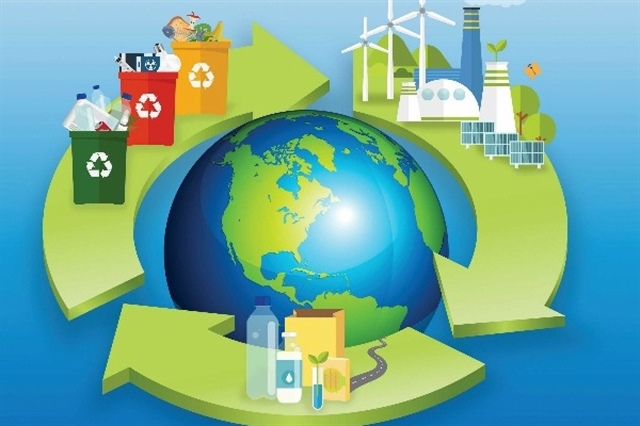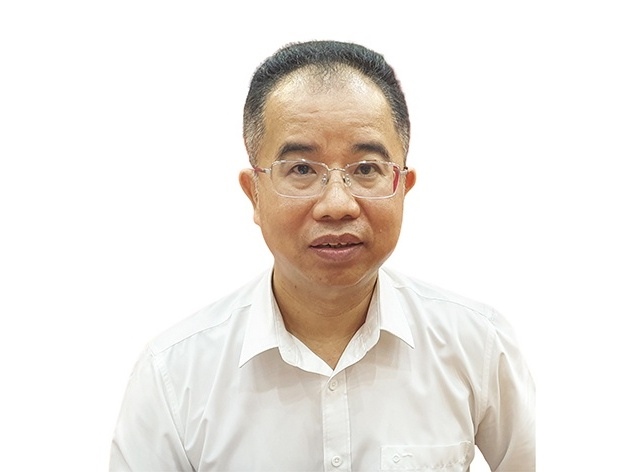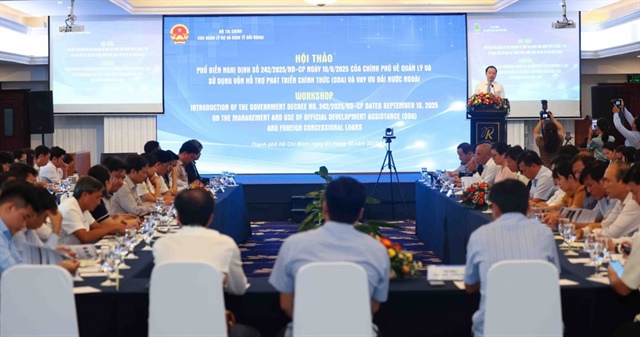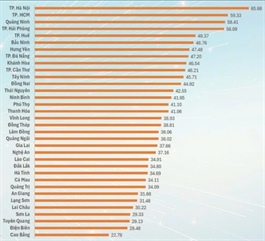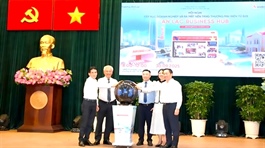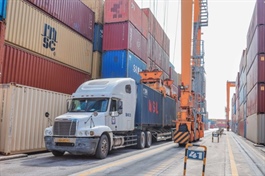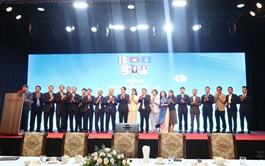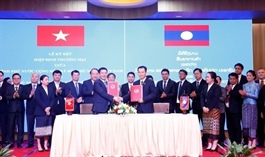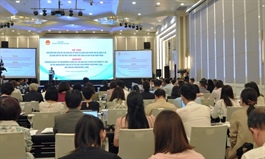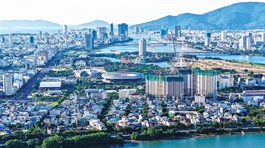Building a circular economy criteria framework for low-emission zones in Vietnam
Building a circular economy criteria framework for low-emission zones in Vietnam
A surge in transport demand is straining the environment, so the circular economy framework offers a path to lower fossil fuel use, enhance efficiency, and drive collective innovation.
|
The objective of the circular economy criteria framework for low-emission areas is to establish a foundation for building a low-emission urban transport ecosystem, in which circular economy principles are applied throughout planning, design, production, exploitation, and end-of-life treatment.
Transport currently accounts for a large proportion of Vietnam's total greenhouse gas emissions. The trend of urban infrastructure development, the rapid increase in personal vehicles, and the demand for logistics and interprovincial freight transport services are increasing environmental challenges.
The circular economy criteria framework restructures the entire value chain, thereby reducing dependence on fossil fuels, improving energy efficiency, encouraging innovation, and mobilising the broad participation of communities, businesses, and social organisations.
The circular economy framework for low emission transport provides a foundation for building a sustainable urban transport ecosystem, reducing environmental pressure and encouraging innovation. It consists of five groups of criteria to cut emissions, improve resource efficiency, and ensure fairness in transition.
First, the circular vehicle criteria reshape vehicles by extending their life and reducing emissions. The aim is to grow the market for low- or zero-emission vehicles while ensuring components are recycled. Emission standards such as Euro 5/6 help eliminate outdated vehicles, while regulations allowing only electric, hydrogen or strict-standard vehicles in low-emission zones incentivize cleaner technology. Key metrics include the percentage of green vehicles in new registrations.
Extending lifecycles reduces virgin resource use and supports industries in refurbishment and remanufacturing. End-of-life management is vital: batteries, tyres, and vehicles must be scientifically collected. The Extended Producer Responsibility (EPR) scheme requires producers and importers to set up take-back points and meet recycling targets.
Second, sustainable transport infrastructure is central to shaping travel behaviour. Criteria emphasizes resource optimization, emission reduction and integration with other urban systems. Using circular materials such as fly ash, slag, recycled plastic and rubber in road construction reduces costs and natural resource exploitation. Prioritising public transport, especially electric buses and multimodal networks, helps shift people from private vehicles. Charging stations powered by renewables further encourage adoption of electric mobility.
Third, circular operations and services highlight the shift from ownership to service models. Shared mobility and optimized logistics reduce vehicles produced, resources used and emissions. Digital platforms connect shippers with trucks to avoid empty runs and increase efficiency. Regulations prioritise electric or low-emission freight vehicles, cutting urban pollution.
Fourth, management mechanisms and financial incentives internalise environmental costs and guide behaviour. Tools include carbon and emission pricing, low-emission zone fees based on vehicle emissions, and congestion charges to reduce traffic and encourage public transport. Credit trading systems manufacturers require to meet targets for clean vehicles, with opportunities to sell or buy credits, fostering a dynamic market.
Fifth, governance, data and social cooperation ensure the framework's sustainability. A digital traffic emission data system enables real-time monitoring, while disclosure supports accountability and innovation. NGOs, industry associations and communities can participate in oversight and pilot programmes. Partnerships between local authorities and enterprises promote infrastructure development and new services. Inter-sectoral coordination is essential.
Roadmap for implementing low-emission zones in Vietnam
The roadmap for implementing low-emission zones in the urban transport sector in Vietnam needs to be designed in a cautious yet decisive manner to lay the foundation for long-term goals. In the period from 2025 to 2027, the focus will be on piloting and building institutional, technical and infrastructure foundations.
Hanoi and Ho Chi Minh City are selected as starting points, with a limited scope in some central districts with high traffic density and poor air quality. The policy focuses on controlling old vehicles that do not meet emission standards, while completely exempting electric vehicles from driving in low-emission zones. This is accompanied by financial support programmes so that people can replace their vehicles, along with the construction of basic charging infrastructure to create trust and convenience for the transition process. This approach lays the foundation for a new transport ecosystem that ensures both environmental goals and social balance.
From 2028 to 2030, the policy expansion and completion phase is implemented on a wider scale, covering the entire inner-city areas of large cities. Emission standards are raised to a higher level, forcing manufacturers and consumers to adjust their vehicle consumption behaviour.
The government needs to initiate a dual credit mechanism for manufacturers, allowing businesses to accumulate credits when investing in environmentally friendly products and offset obligations when exceeding the permitted emission levels. Low Carbon Fuel Standard credits, New Energy Vehicle credits, and Corporate Average Fuel Consumption credits need to be applied flexibly. Charging infrastructure systems are widely spread, creating conditions for EVs to become a popular choice.
After 2030, low-emission zones will be fully operational in all first-class cities, moving towards a mature stage in urban emission management. The carbon credit market in the transport sector will be established and operate stably, creating financial incentives to promote technological innovation.
Circular economic models will develop strongly, especially in the fields of battery recycling, component refurbishment and reuse of materials from end-of-life vehicles. These activities will directly contribute to the goals of the National Action Plan on Circular Economy by 2035.
Vietnam can thus narrow the gap with accelerating countries in establishing low-emission zones, while building the image of a green, smart and highly competitive urban area in the region.
International experience shows that low emission zone policies are not only an environmental management tool, but also a lever to promote innovation in industry and urban services.
Seoul has implemented a low emission zone since 2017, banning old diesel vehicles from entering the central area, thereby significantly reducing the concentration of fine dust and NOx emissions.
China has applied national plans such as the “Blue Sky Campaign” or diesel truck control programme, combining strong development of new energy vehicles and renewable energy investment, and building a roadmap to reach a peak in CO₂ emissions before 2030 and carbon neutrality before 2060. Differences in context and goals mean that each country needs to design its own mechanism, but the common point lies in the close combination of legal tools, market mechanisms and technological innovation.
Vietnam can inherit these experiences to perfect a suitable model that both meets international commitments and ensures considerations in domestic conditions.
- 18:59 01/10/2025


